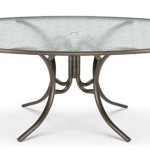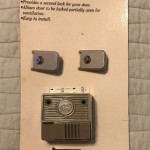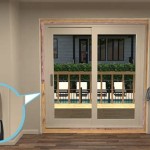Patio Blocks DIY: A Comprehensive Guide to Creating a Stunning Outdoor Space
Transform your backyard into an inviting oasis with the allure of DIY patio blocks. Whether you're an experienced DIY enthusiast or a novice seeking to enhance your outdoor living, this comprehensive guide will empower you with the knowledge and techniques to create a durable and visually appealing patio that will elevate your outdoor experience.
Materials and Tools
Your DIY patio journey begins with selecting the best materials and tools. Patio blocks come in various materials such as concrete, brick, or natural stone. Choose the material that aligns with your aesthetic preferences, budget, and durability requirements. Essential tools include a level, string line, rake, trowel, tamper, and a circular saw for precise cuts.
Site Preparation and Leveling
A solid foundation is paramount for a long-lasting patio. Start by clearing the area of debris and grass. Establish the perimeter of your patio using stakes and string lines. Next, level the ground using a rake and compact it with a tamper. Dig a base layer of gravel or crushed stone for drainage and stability.
Laying the Patio Blocks
With your base layer in place, it's time to lay the patio blocks. Begin by creating a dry layout to visualize the pattern and ensure proper spacing. Apply a thin layer of sand or fine gravel to the base layer and screed it flat. Place the first row of patio blocks along the string lines, ensuring they are level and secure. Use a level to check each block as you progress.
Edging and Borders
Define the perimeter of your patio with edging or borders to prevent movement and enhance aesthetics. Edging can be made of concrete, plastic, or metal. Install them along the outer edge of the patio blocks, securing them with stakes or adhesive. For a more decorative touch, consider adding a border of decorative stones or bricks.
Grouting and Sealing
Once the patio blocks are in place, fill the gaps between them with grout. Choose a grout color that complements the patio blocks and apply it using a grout bag or trowel. Ensure the grout is packed firmly into the joints. Allow the grout to cure completely before sealing the patio. Sealing helps protect the patio from stains, moisture, and UV damage, enhancing its durability and lifespan.
Finishing Touches
Complete your DIY patio with final touches that add style and functionality. Add outdoor furniture, such as chairs, tables, or a fire pit, to create a comfortable lounge area. Consider incorporating lighting fixtures to extend your outdoor enjoyment into the evening. Enhance privacy and ambience by planting shrubs or small trees around the perimeter of your patio.
Embark on your DIY patio block project with confidence, using this comprehensive guide as your trusted companion. Transform your backyard into a stunning outdoor retreat that will provide years of joy and relaxation.

Diy Pea Gravel Patio With Pavers Love Renovations

Budget Friendly Diy Paver Block Patio Interior Frugalista

Diy Paver Patio For Normal People

Diy Patio With Grass Between Pavers And A Fire Pit

Installing A Diy Paver Patio Is The Ultimate Spring Project

Budget Friendly Diy Paver Block Patio Interior Frugalista

How To Build A Paver Patio It S Done Young House Love

10 Tips And Tricks For Paver Patios

Build A Brick Patio Start To Finish

Installing A Diy Paver Patio Is The Ultimate Spring Project Pavers Concrete








